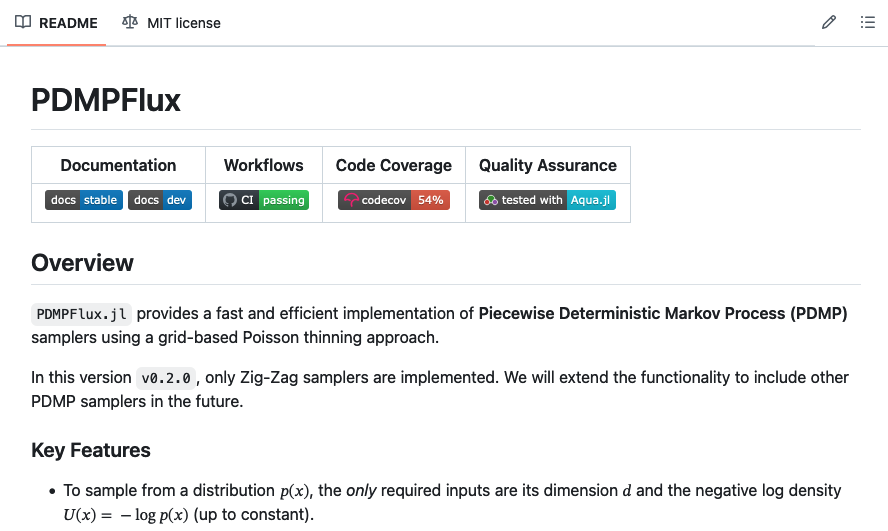1 Introduction
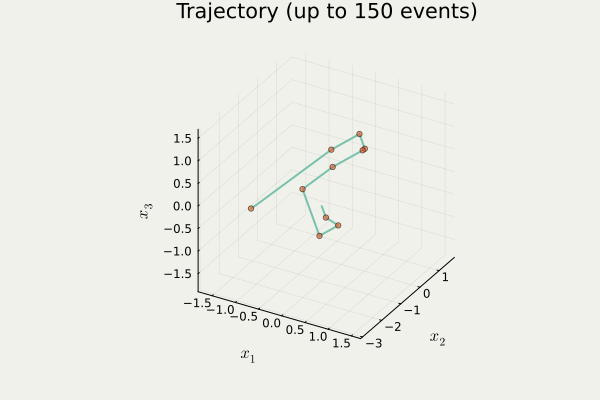
anim_traj() in PDMPFlux.jl packageA Blog Entry on Bayesian Computation by an Applied Mathematician
$$
$$
1.1 Overview
PDMPFlux.jl: package for MCMC sampling.
1.2 What’s Different? (Detailed in Section 2)
Instead of Markov Chains, PDMPFlux.jl uses:

Currently, most PDMPs move piecewise linearly.
1.3 What’s PDMP? (Detailed in Section 2)
| PDMP | Diffusion | |
|---|---|---|
| Diffuse? | No | Yes |
| Jump? | Yes | No |
| Driving noise | Poisson | Gauss |
| Plot | 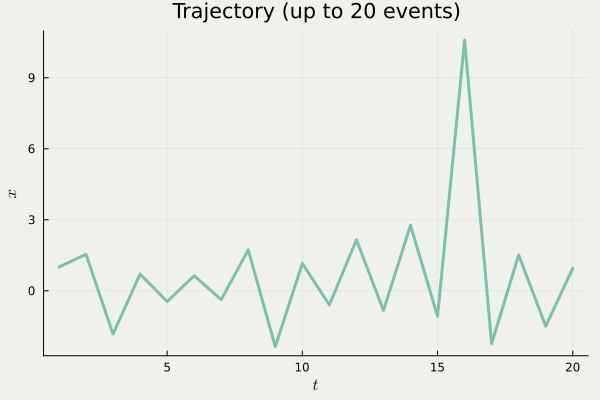 |
1.4 How to Use? (1/3)
using PDMPFlux
function U_Cauchy(x::Vector)
return log(1 + x.^2)
end
dim = 10
sampler = ZigZagAD(dim, U_Cauchy) # Instantiate a samplerInputs: Dimension d, and any U that satisfies
p(x) \,\propto\,\exp\left\{ -U(x) \right\},\qquad x\in\mathbb{R}^d.
U may be called potential, or negative log-density.
1.5 How to Use? (2/3)
N_sk, N, xinit, vinit = 1_000_000, 1_000_000, zeros(dim), ones(dim) # Hyperparameters
samples = sample(sampler, N_sk, N, xinit, vinit, seed=2024)Output: N samples from p\,\propto\,e^{-U}.
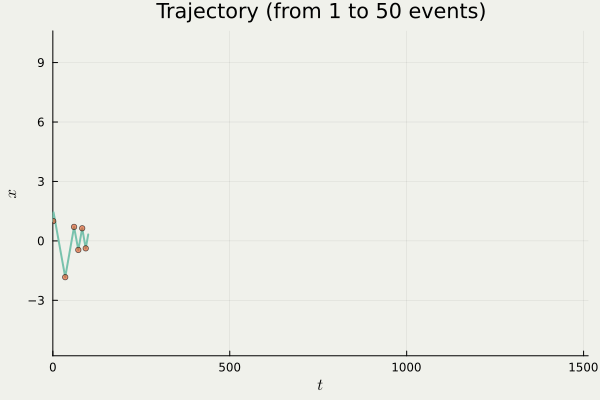
N_sk: number of orange points, N: number of samples, xinit, vinit: initial position and velocity.
1.6 How to Use? (3/3)
Function sample is a wrapper of:
traj = sample_skeleton(sampler, N_sk, xinit, vinit) # simulate skeleton points
samples = sample_from_skeleton(sampler, N, traj) # get samples from the skeleton pointstraj contains a list \{x_i\}_{i=1}^{N_{sk}} of orange points

1.7 Diagnostic
diagnostic(traj)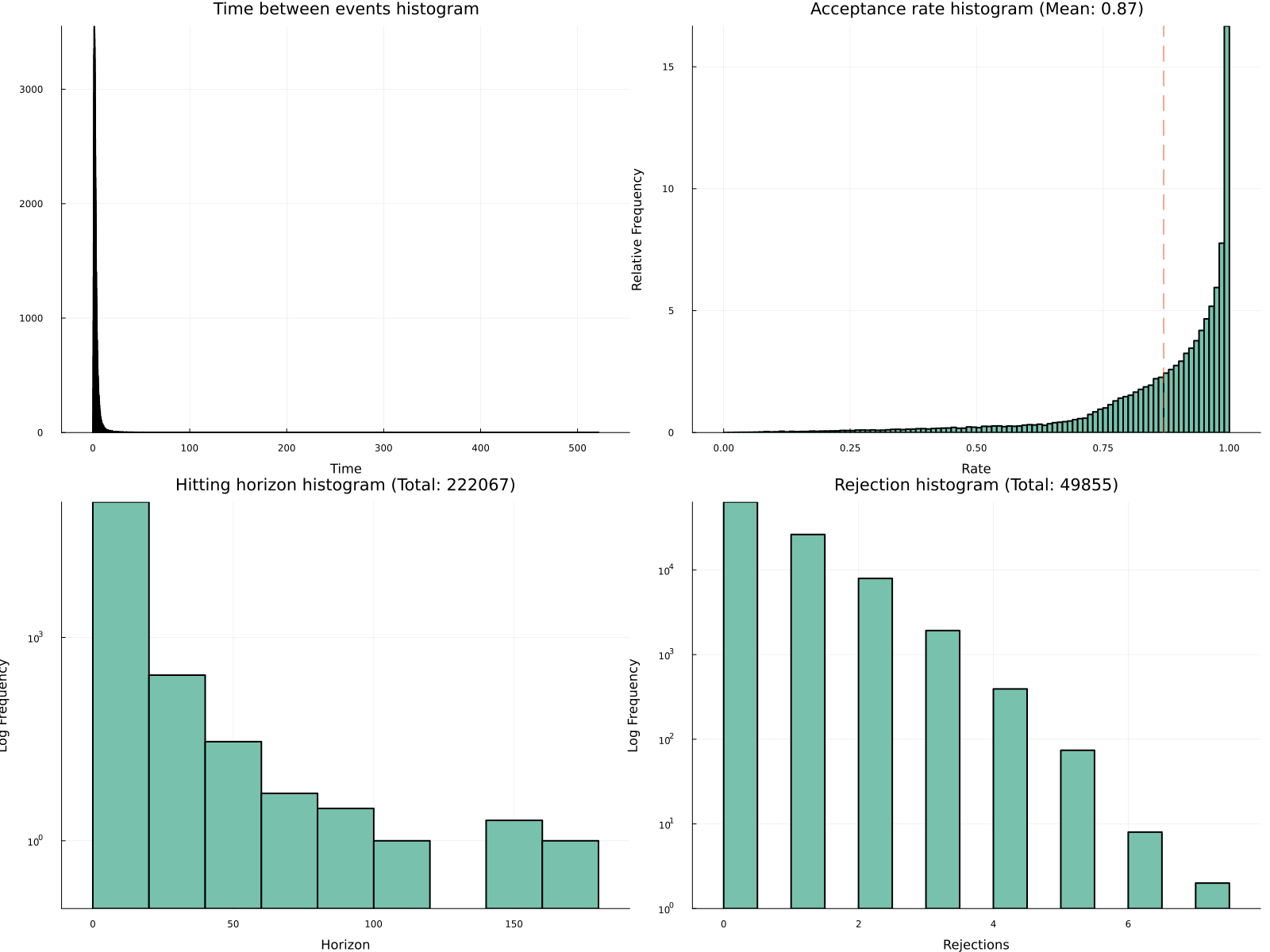
We see acceptance rate is a bit low due to the long tails of p.
2 What is PDMP?
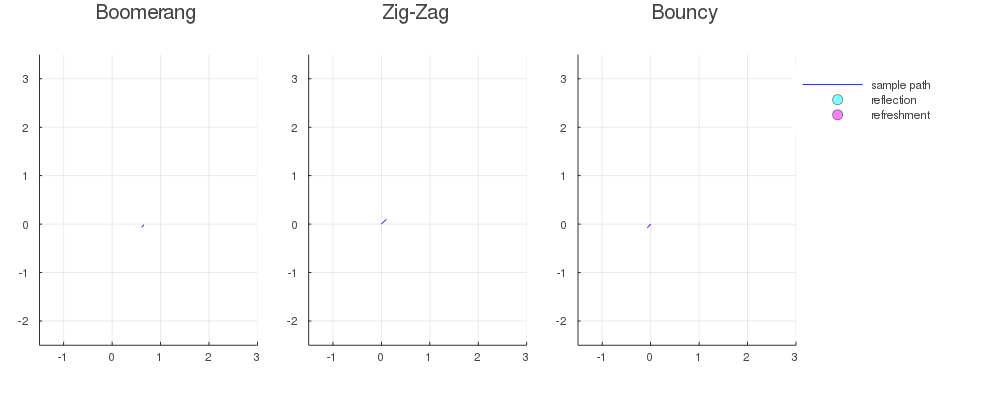
2.1 Two Key Changes in MCMC History
- Lifting: MH (Metropolis-Hastings) → Lifted MH
- Continuous-time Limit: Lifted MH → Zig-Zag Sampler
2.2 What’s Wrong with MH?: Reversibility
Reversibility (a.k.a detailed balance): p(x)q(x|y)=p(y)q(y|x). In words: \text{Probability}[\text{Going}\;x\to y]=\text{Probability}[\text{Going}\;y\to x]. Harder to explore the entire space
Slow mixing of MH
2.3 Lifting into a Larger State Space
q^{(+1)}: Only propose \rightarrow moves
q^{(-1)}: Only propose \leftarrow moves
Once going uphill, it continues to go uphill.
This is irreversible, since
\begin{align*} &\text{Probability}[x\to y]\\ &\qquad\ne\text{Probability}[y\to x]. \end{align*}
2.4 Continuous-time Limit: A Strategy for Efficient Computing
‘Limiting case of lifted MH’ means that we only simulate where we should flip the momentum \sigma\in\{\pm1\} in Lifted MH.
2.5 Summary
- PDMPs have irreversible dynamics
- PDMPs are easy to simulate
- Promising for high-dimensional problems
Using PDMPFlux.jl, I want to fit a large Bayesian model, showcasing the usefulness of PDMP samplers.
